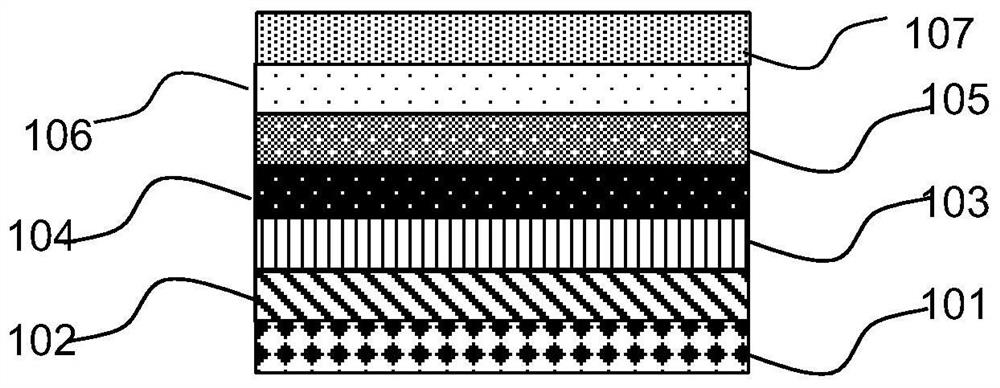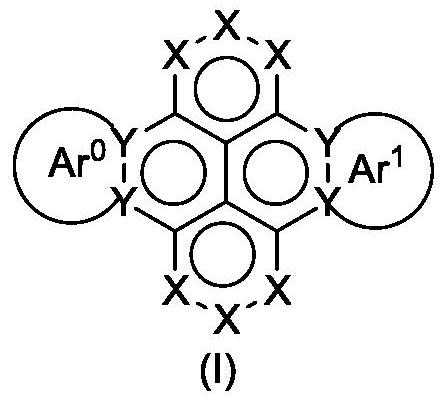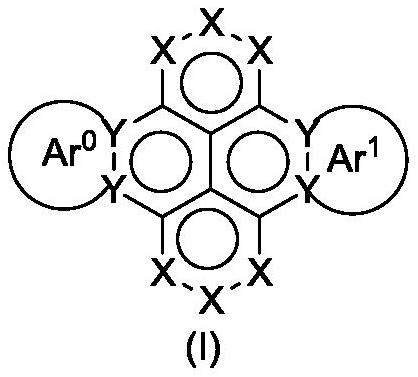Pyrene quinone organic compounds and their applications
A technology of organic compounds and quinones, which is applied in the field of organic electroluminescence, can solve problems such as insufficient stability, reduced lifetime of organic light-emitting diodes, and reduced lifetime, achieve excellent hole transport properties and stability, and improve electroluminescence efficiency , The effect of prolonging the life of the device
- Summary
- Abstract
- Description
- Claims
- Application Information
AI Technical Summary
Problems solved by technology
Method used
Image
Examples
Embodiment 1
[0197] Embodiment 1 synthetic compound DPQ-1
[0198]
[0199] Synthesis of compound A2:
[0200] Compound A1 (2.02g, 10mmol), sodium periodate (NaIO 4 17.6g, 81.8mmol), ruthenium trichloride (RuCl.XH 2 (0, 0.25g1.2mmol), acetonitrile 40ml, dichloromethane 40ml, and distilled water 50ml stirred overnight at 30-40 degrees, the reaction product was cooled to room temperature, and 200ml distilled water was added, then the precipitate formed by filtration under reduced pressure was used Extract the filtrate with dichloromethane, and add anhydrous magnesium sulfate to it to remove moisture, then remove the solvent under reduced pressure, use dichloromethane as the eluent to pass the residue through a silica gel column to obtain the product, then remove the solvent under reduced pressure And the product was dried in vacuo to prepare the desired solid compound A2 (0.8g, 31%), MS: [M+H] + =263.
[0201] Synthesis of compound A3:
[0202] Compound A2 (2.62g, 10mmol) was diss...
Embodiment 2
[0211] Embodiment 2 synthetic compound DPQ-2
[0212]
[0213] Synthesis of compound DPQ-2:
[0214] Compound A5 (3.89g, 10mmol), A7 (2.16g, 20mmol) and 10ml of acetic acid were heated overnight, the reaction mixture was cooled to room temperature, the solid generated by filtration was washed with ethanol and water to obtain DPQ-2 (4g, 79 %).
Embodiment 3
[0215] Embodiment 3 synthetic compound DPQ-3
[0216]
[0217] Synthesis of compound DPQ-3:
[0218] Compound A5 (3.89g, 10mmol), A8 (4.16g, 20mmol) and 10ml of acetic acid were heated overnight, the reaction mixture was cooled to room temperature, and the resulting solid was filtered and washed with ethanol and water to obtain DPQ-3 (4.39g, 60%).
PUM
| Property | Measurement | Unit |
|---|---|---|
| glass transition temperature | aaaaa | aaaaa |
| boiling point | aaaaa | aaaaa |
| glass transition temperature | aaaaa | aaaaa |
Abstract
Description
Claims
Application Information
 Login to View More
Login to View More - R&D
- Intellectual Property
- Life Sciences
- Materials
- Tech Scout
- Unparalleled Data Quality
- Higher Quality Content
- 60% Fewer Hallucinations
Browse by: Latest US Patents, China's latest patents, Technical Efficacy Thesaurus, Application Domain, Technology Topic, Popular Technical Reports.
© 2025 PatSnap. All rights reserved.Legal|Privacy policy|Modern Slavery Act Transparency Statement|Sitemap|About US| Contact US: help@patsnap.com



